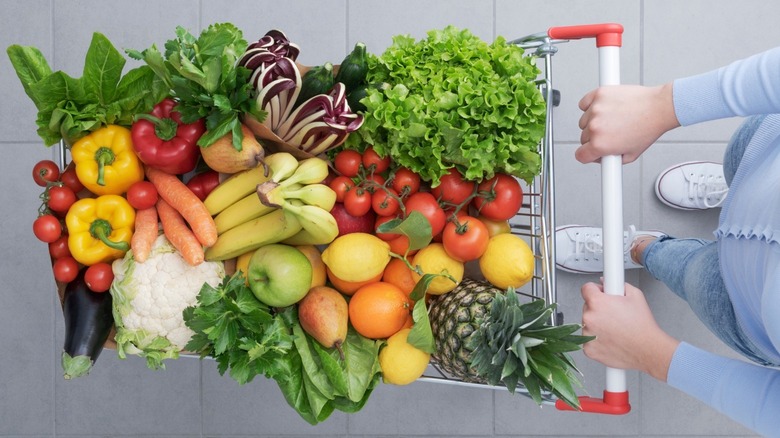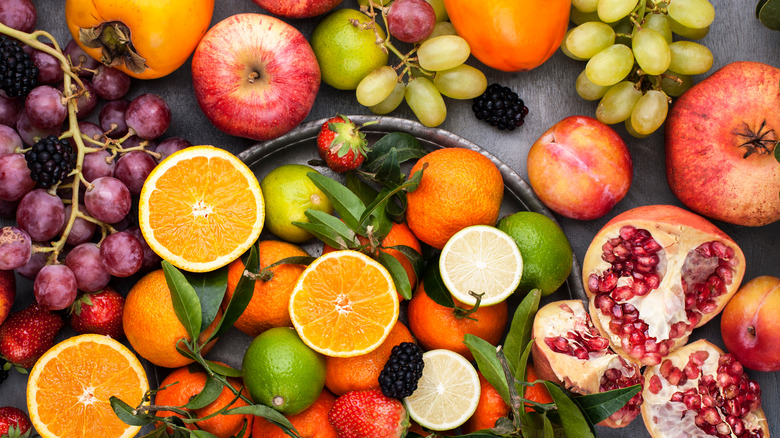You Don't Need To Squeeze Produce To See If It's Fresh
Grocery stores go to a lot of effort to make sure the presentation of fresh fruit and vegetables in the produce section looks close to perfect. If you've ever grown your own or been to a farm, one thing that might strike you is how the fruit and veg offerings aren't the same uniform shapes and colors that you get in the local store. That's because the "non-sellable" or "imperfect" produce makes up 40% of total food waste, according to Forbes. Plus, all the items are in a perishable state so stores hope that their customers are going to handle things with care. Unlike pre-packaged goods, it's easy for consumers to check which items are ripe or overripe in order to pick the best fruit and veg for your home. That's where poking and prodding tends to come into play, because traditionally, we're taught to use the squeeze test.
This Today article from 10 years ago suggests selecting vegetables such as eggplants and tomatoes based on their firmness, which requires some handling of the product. With hundreds of people coming through the fresh food section on a daily basis, and many testing the produce this way, squeezing for firmness, the shelf life of the product would diminish much quicker. We were also made aware of the amount of people touching fresh fruit and veg during the pandemic, so it was important to find other methods to test for ripeness.
Over-handling fruit and veg can damage them
Avocados Australia reported that "the average avocado is touched by four would-be shoppers before it's bought," and in a 2015 study, Australian Horticultural innovation discovered that the grocery store was where the fruit was experiencing the most damage, causing internal bruising. While the avocado industry is using infrared technology to help determine the good fruit from the bad before they reach the store, 90% of the bruising occurred from people squeezing too hard, per Guardian. While other produce doesn't bruise in the same way as an avocado, similar damage can be done when multiple people are testing these items in store.
To make things easier for consumers inventors in Israel came up with a pocket-sized sensor that can determine if produce is ripe or not. However, this has yet to be a widely available item, so in the meantime, we will need to use our senses.
Instead of first picking up fruits or vegetables, All Recipes suggests that you can "tell a lot about ripeness" by first looking at the appearance of the fruit or vegetable. Use your senses in order — look for "color, size, and outer texture," then gently pick your fruit or vegetable and smell for fragrance. Australia's Best Recipes says, "Smell the flower end of the fruit (opposite the stem end) and only select fruit that has a fresh, fruity aroma." Finally, if you're still not sure, it's okay to gently feel how firm the product is.

